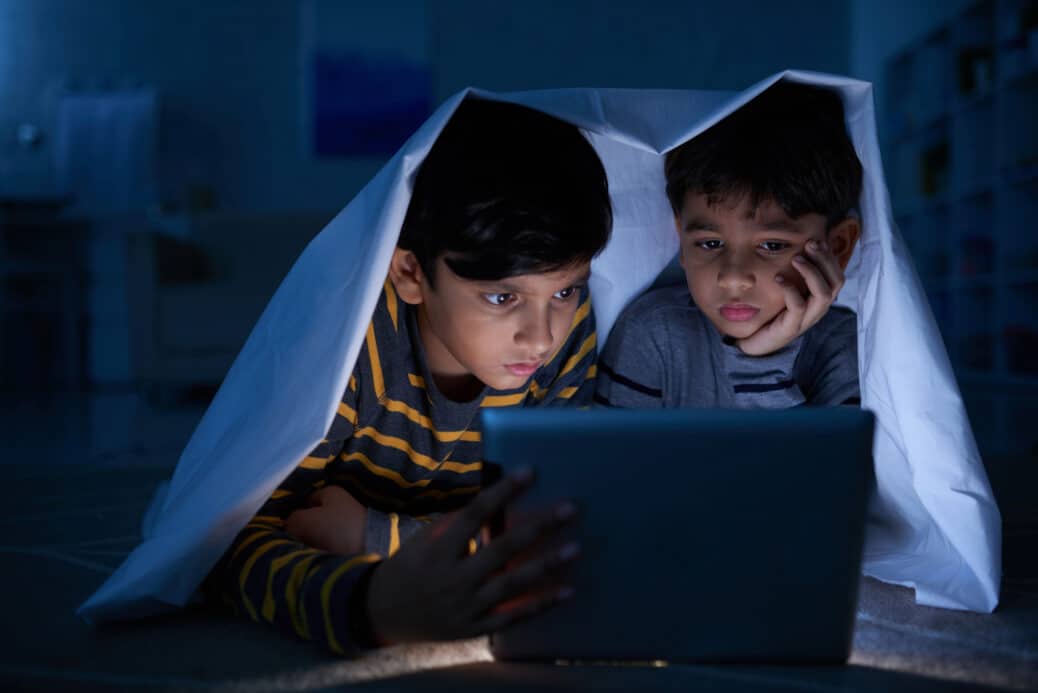Online learning is an essential component of contemporary education. As a result, pupils spend long periods of time in front of computers or tablets. They take virtual classes and complete assignments. They engage with their classmates in a digital setting. Of course, this format offers numerous benefits. These include access to knowledge, a diverse set of educational resources, and, in some cases, even flexible timetables. However, as always, along with the positives come serious hidden risks. And the latter can harm children.
The dangers lie not only in the fact that a child may encounter malicious individuals online or questionable content. Online learning opens the door to cyberattacks and the collection of personal data. It also promotes the propagation of dangerous software. That is why it is critical for parents to be aware of these risks and take prompt action. This is the only method to protect your child and provide a secure digital environment for their development.
What Lies Behind Convenience. The Risks of Online Learning
There are many educational platforms. However, not all of them guarantee an adequate level of data protection. Passwords can be easily cracked. Children’s personal information falls into the hands of fraudsters. Another danger is that schoolchildren gain access to third-party websites. There, they may encounter unwanted or even dangerous content. That is why the issue of internet safety for children is coming to the fore. It determines how safe and therefore comfortable the learning process will be.
The problems are not limited to information threats. Malicious software can infiltrate devices through suspicious links and downloaded files. Children may not even realise that they have opened a potentially dangerous document. The consequences can be extremely serious, ranging from data destruction to account theft.
Checking devices for malicious software
When it comes to your child’s safety while learning, consider not only the content but also the technical condition of the devices. Many parents believe that Apple computers are reliably protected. However, even a MacBook can become a target for attackers.
Therefore, the questions of how to check for malware on Mac and choosing high-quality Mac protection come to the fore. If you want to understand how to check your MacBook for viruses and ensure its security, using Moonlock, crafted by MacPaw, will be handy. With Moonlock, you can quickly and conveniently diagnose your system to avoid hidden threats. Also, keep in mind that inspecting your device is part of a more holistic approach.
Even the greatest solutions cannot guarantee complete security without strong passwords, updated software, and correctly adjusted browser limitations. So, keep aware and don’t pass up security deals and timely updates.
Protect Children from Inappropriate Content. How?
How to protect children from inappropriate internet content remains one of the most difficult problems. Educational websites may contain advertisements as well as links to third-party resources. Children may accidentally click on such links. Then, they encounter aggressive or shocking material. Parents can use special content filtering programs. They block dangerous sites and allow you to control what your child is viewing online. It is also crucial to set up children’s accounts in browsers and educational apps. This way, you minimise access to questionable resources.
Hidden risks
In addition to direct threats related to viruses and harmful content, there are Hidden Dangers of AI. Educational platforms are increasingly using machine learning algorithms. They do this to personalise the learning process.
However, these algorithms collect and analyse large amounts of data about children. In particular,
- Their academic performance;
- Interests;
- Behavioural patterns.
On the one hand, this helps to create more effective programs. On the other hand, it opens the door to manipulation and invasion of privacy.
Parents need to understand:
– What data does the educational resource collect?
– Does it have a reliable privacy policy?
Read the user agreement very carefully. Give preference to platforms that clearly explain how information is processed.
Practical Steps for Parents
– Strong passwords. 2FA
Many account hacks occur because of weak passwords. Teach your child to create complex combinations. Explain why they should not use the same word for different websites.
– Regular software updates
System and application updates contain fixes for vulnerabilities. And the latest ones are known to be used by hackers. If you, as a parent, pay attention to updates, this will significantly reduce the risk of your devices being infected.
– Parental control
Modern operating systems and browsers have built-in tools to restrict access to unwanted websites. Configure them according to your child’s age.
– Digital literacy
No program can replace knowledge and skills. Children need to understand that they should not open suspicious files and share personal information. Also, click on unfamiliar links.
– Sharing resources
When your child is learning online, be present from time to time. This allows you to respond promptly in the event of questionable conduct.
Balance between learning and safety
Too much control can make a child feel distrustful. It can also make them feel restricted. So, find a balance. Ensure internet safety for children, but leave room for independence. Explain the reasons for the rules and discuss new tools and resources with your child.
Conclusion
Online learning opens up great opportunities for children’s development. However, it also brings new challenges. Hidden risks should not be overlooked by parents. Children can only be protected through a comprehensive approach. This includes technical tools and proper settings. And, most essential, have regular conversations with your child about online safety. When parents are concerned about how to protect their children from harmful internet information and how to mitigate the hidden threats of AI, they display responsibility and caring. This is how a new culture of digital safety is formed. It will allow children to learn online without fear and with maximum benefit.

















